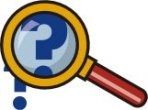
Worksheets and No Prep Teaching Resources
Reading Comprehension Worksheets
Mystery May

Mystery May
 Worksheets and No Prep Teaching Resources Reading Comprehension Worksheets Mystery May |
 Mystery May |
| edHelper's suggested reading level: | grades 5 to 6 | |
| Flesch-Kincaid grade level: | 7.62 |
|
Unicorns
By Cindy Grigg |

|
 1 Unicorns have often been written about in books as gentle animals. They usually have magical powers and seem to symbolize purity and goodness. Unicorns are mythical creatures. No one knows for sure if they ever lived, or if someone just imagined them. Most people think of unicorns as an animal that looks like a horse except that it has a long, spiral horn coming out of its forehead. However, in older stories, unicorns had billy-goat beards, lions' tails, and cloven hooves. Cloven hooves are hooves that are split in the middle, like a deer's hoof. All animals that have horns today also have cloven hooves. In some stories, unicorns were able to fly. Always, unicorns were seen as good creatures, shy, mysterious, beautiful, and uncatchable.
1 Unicorns have often been written about in books as gentle animals. They usually have magical powers and seem to symbolize purity and goodness. Unicorns are mythical creatures. No one knows for sure if they ever lived, or if someone just imagined them. Most people think of unicorns as an animal that looks like a horse except that it has a long, spiral horn coming out of its forehead. However, in older stories, unicorns had billy-goat beards, lions' tails, and cloven hooves. Cloven hooves are hooves that are split in the middle, like a deer's hoof. All animals that have horns today also have cloven hooves. In some stories, unicorns were able to fly. Always, unicorns were seen as good creatures, shy, mysterious, beautiful, and uncatchable. |
Create Weekly Reading Books
Prepare for an entire week at once! |
| Leave your feedback on Unicorns (use this link if you found an error in the story) |
 |
Mystery May
|